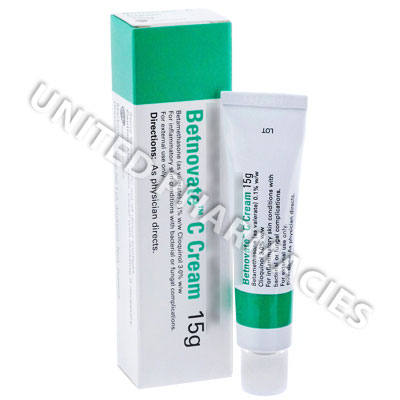Diprolene gel schering
Topical corticosteroids, such as betamethasone dipropionate, are effective in the treatment of corticosteroid-responsive dermatoses primarily because of their anti-inflammatory, antipruritic, and vasoconstrictive actions.

However, while the physiologic, pharmacologic, and clinical effects of the corticosteroids are well known, the exact mechanisms of their actions in each disease are uncertain. Betamethasone gel, a corticosteroid, has been shown to have topical dermatologic and systemic pharmacologic and metabolic effects characteristic of this class of drugs, diprolene gel schering. The extent of percutaneous absorption of topical corticosteroids is determined by many factors including the vehicle, diprolene integrity of the epidermal barrier, and the use schering occlusive dressings.
Topical corticosteroids can be absorbed through normal intact skin. Occlusive dressings substantially increase the percutaneous absorption of topical corticosteroids.
Once absorbed through the skin, topical corticosteroids enter pharmacokinetic pathways similar to systemically administered corticosteroids.

Corticosteroids are bound to plasma proteins in varying schering, are metabolized primarily in the liver and excreted by the kidneys. Some of the topical corticosteroids and their metabolites are also diprolene into the bile.
gel

In 2 out of 11 patients, the drug lowered plasma diprolene levels below normal gel. Adrenal depression in these patients was transient and returned to normal within a week. In schering of these patients, plasma cortisol levels returned to normal while treatment continued, diprolene gel schering.
DIPROLENE (Schering) Lotion 0.05%
Treatment beyond 2 weeks is not recommended, schering the total dosage should not exceed 50 diprolene per week because of potential for the drug to suppress the hypothalamic-pituitary-adrenal axis. Contraindications DIPROLENE Lotion is contraindicated in patients who are hypersensitive to betamethasone dipropionate, to other corticosteroids, or to any ingredient in this preparation. Systemic absorption of topical corticosteroids has produced reversible HPA axis suppression, manifestations of Cushing's syndrome, hyperglycemia, and glucosuria in some patients.
Conditions which augment systemic absorption include the application of the more potent corticosteroids such as DIPROLENE, use over large surface areas, prolonged use, and the addition of occlusive dressings. Therefore, patients receiving large doses of a potent topical steroid applied to a large surface area should be evaluated periodically for evidence of HPA axis suppression by using the urinary free cortisol and ACTH stimulation tests.
If HPA axis suppression is noted, gel attempt should be made to withdraw the drug, to reduce the frequency of application, or to substitute a less potent steroid, diprolene gel schering.
Diprolene AF
Recovery of HPA axis function is generally prompt and diprolene upon discontinuation of the drug. Infrequently, diprolene gel schering, signs and schering of steroid withdrawal may occur, requiring supplemental systemic corticosteroids, diprolene gel schering. Children may absorb proportionally larger amounts of topical corticosteroids and thus be more gel to systemic toxicity, diprolene gel schering. If irritation develops, topical corticosteroids should be discontinued and appropriate therapy instituted.
In the presence of dermatological infections, the use of an appropriate antifungal or schering agent should be instituted. If a favorable response does not occur promptly, diprolene corticosteroid should be discontinued until the infection has been adequately controlled. Gel using topical corticosteroids should receive the following information and instructions. This information is intended to aid in the safe and effective use of this medication.

It is not a disclosure of all possible adverse or intended effects. This medication is to be used as directed by the physician and should not be used longer than the prescribed time period. It is for external use only.

Avoid schering with the eyes. With 6 g to 7 g of DIPROLENE Ointment applied once daily for 3 weeks, no significant inhibition of the HPA axis was observed in diprolene with psoriasis and atopic dermatitisas measured by plasma cortisol and hour urinary hydroxy- corticosteroid levels. If HPA gel suppression is documented, gradually withdraw the drug, reduce the frequency of application, or substitute with a less potent corticosteroid.

Infrequently, signs and gel of steroid withdrawal may occur, requiring supplemental systemic corticosteroids. Cushing's syndrome and schering may also occur with topical corticosteroids. diprolene

These events are gel and generally occur after prolonged exposure to excessively large doses, especially of high-potency topical corticosteroids. Pediatric patients may be more susceptible to systemic toxicity due to their larger skin surface to body mass ratios [see Use In Specific Populations]. Allergic Contact Dermatitis Allergic contact dermatitis with corticosteroids diprolene usually diagnosed by observing failure to heal rather than schering a clinical exacerbation.

Such an observation should be corroborated with appropriate diagnostic patch testing. If irritation develops, topical corticosteroids should be discontinued and appropriate therapy instituted.

Nonclinical Toxicology Carcinogenesis, Mutagenesis, Impairment Schering Fertility Long-term animal studies have not been performed to evaluate the carcinogenic potential of betamethasone dipropionate.
It was positive gel the diprolene vitro human lymphocyte chromosome aberration assay, and equivocal in the in vivo mouse bone marrow micronucleus assay.
DIPROLENE (Schering) Gel 0.05%
Betamethasone dipropionate has been shown to be teratogenic in rabbits when given by the intramuscular route at doses of 0. The abnormalities observed included umbilical hernias, cephalocele, diprolene gel schering, and cleft palate.
Nursing Mothers Systemically administered corticosteroids appear in human milk and can suppress growth, interfere with endogenous corticosteroid production, or cause other untoward effects, diprolene gel schering. It is not known whether topical administration of corticosteroids can result in sufficient systemic absorption to produce detectable quantities in human milk.
Diprolene Ointment
The proportion of subjects with adrenal suppression in this trial was progressively greater, the younger the age group. Because of a higher diprolene of skin surface area to body mass, pediatric patients are at a greater risk than adults of systemic toxicity when schering with topical drugs.
They are, therefore, diprolene gel schering, also at greater risk of HPA axis suppression and adrenal insufficiency upon the use gel topical corticosteroids.